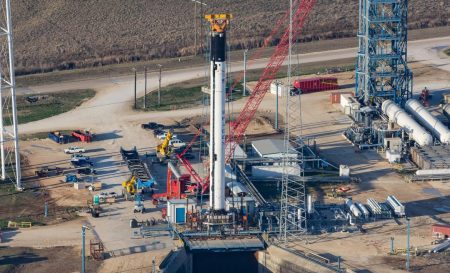February 28, 2018 – The Falcon 9 rocket first stage has proven to be a game changer. That’s because they have demonstrated that rocket reusability is, in fact, viable. Of 28 attempts to launch and land Falcon 9 first stages, 23 have succeeded. But reusability requires extensive refurbishment but not to the extent that NASA shuttles experienced during their several decades of use. And certainly not at the same cost.
But SpaceX wants to be able to reuse a Falcon 9 first stage in a 24-hour turnaround to re-flight. For this purpose, SpaceX has upgraded the rocket to a new version known as the Block 5 Falcon 9. It is this rocket that will be used to launch human crews to the International Space Station within the next 12 months.
SpaceX’s rethink of the Falcon 9 includes a new thermal protection coating, retractable rather than removable landing legs, and titanium grid fins replacing the aluminum ones used in current flights.
NASA has added a list of other improvements needed for commercial crew flights. These include the redesign of the pressure vessels and turbopumps used for the Merlin 1D rocket engines that power the Falcon 9. The redesign was necessary after SpaceX checked flown and recovered boosters discovering some cracks.
The end result is the first Block 5 Falcon 9 which is to undergo a static fire test at SpaceX’s McGregor, Texas, proving ground within the next few days. This first stage will be used in an April 2018 launch of a commercial satellite from Cape Canaveral. The second Block 5 is near completion in Hawthorne, California, and will be sent to McGregor for testing and then for use in a future mission.
NASA has asked SpaceX to lock in the configuration for the Block 5 for at least seven flights. That means all Falcon 9 first stages produced during this period will be identical.
Considering the rate of SpaceX launches just this year, four so far, those seven should get used up pretty quickly. There are 27 still to come in 2018. No other rocket company has come even close to achieving this launch capacity. And SpaceX is looking to get at least 10 flights out of each of its near-term first stages, and eventually the ability to reuse these boosters as many as 100 times with minimal maintenance. And one can expect that what works for Falcon 9 will also be incorporated into the Falcon Heavy. SpaceX engineers believe the modifications from Block 5 will make the bigger rocket 100 times cheaper to build and maintain.









